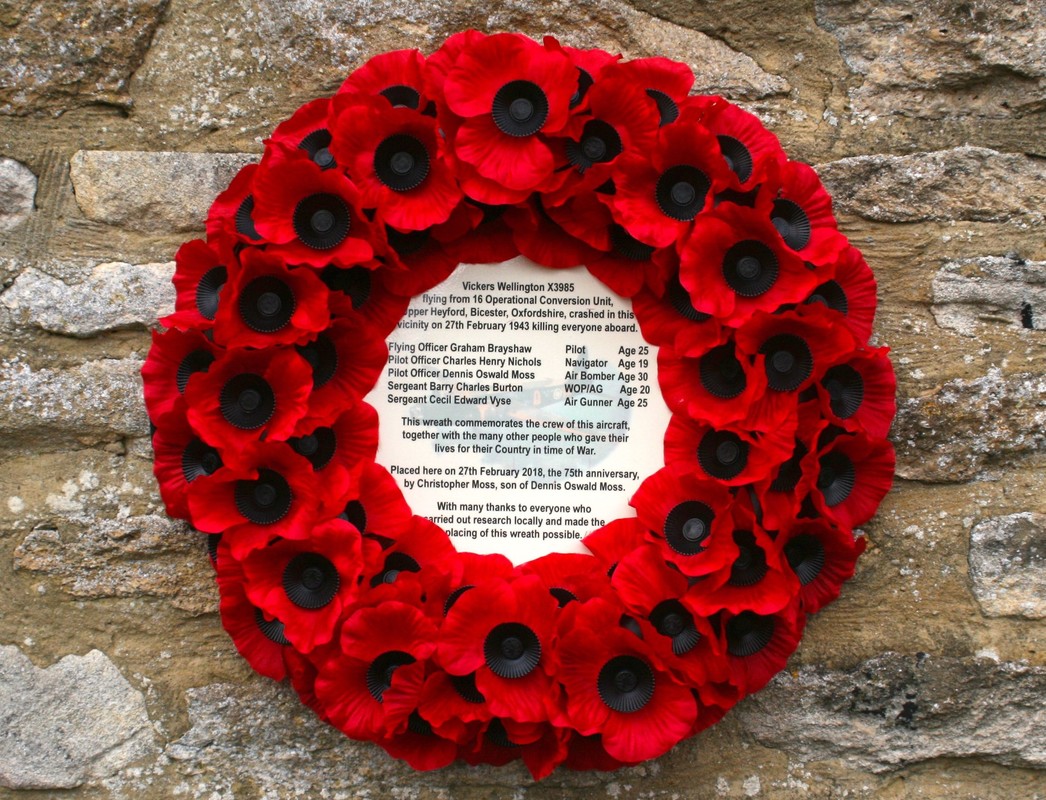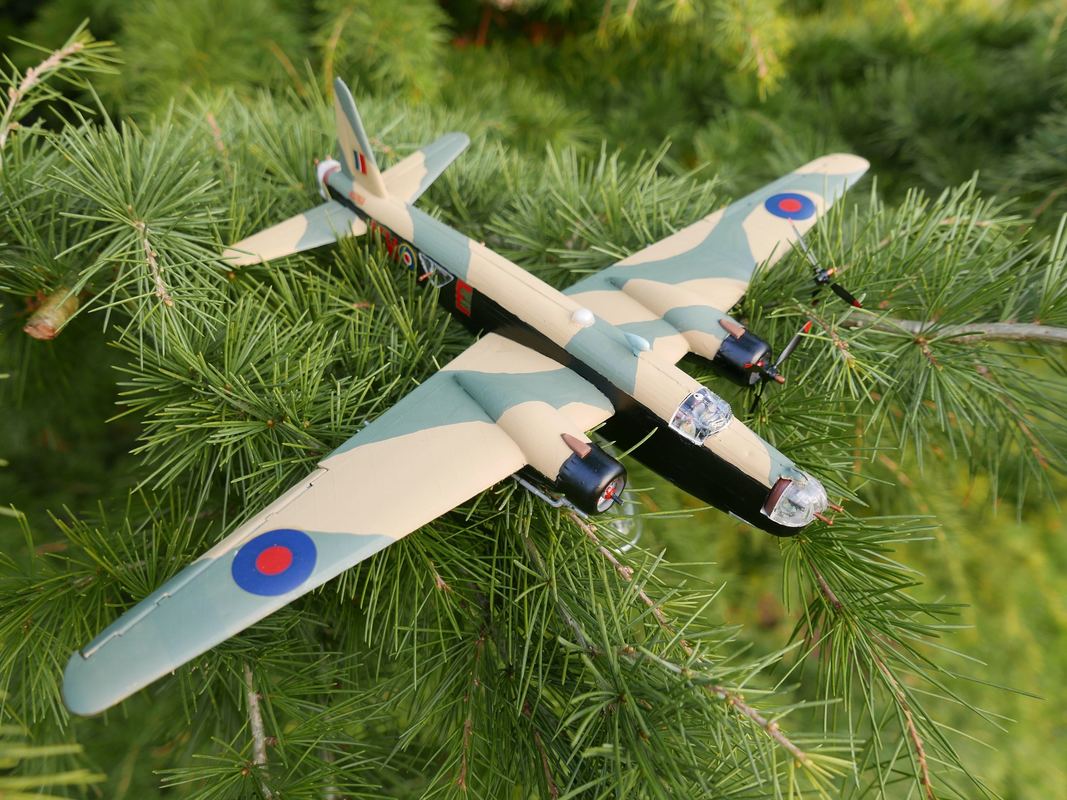Hazelbury Crash Follow-up David Wright March 2018
Several people have asked about the wreath in the last issue which was carried by Christopher Moss to commemorate the airmen who lost their lives in 1943 at Hazelbury. The wreath commemorated all those who died. We have also been requested to say more about why the plane might have crashed.
|
Short history of the Wellington Bomber David Wright March 2018 The Vickers Armstrong Wellington, affectionately known as the 'Wimpey' was the standard Royal Air Force (RAF) night bomber from 1936 until late in the war, and was built in larger numbers than any other British bomber, 11,450 being produced. By no means a new aircraft at the outbreak of war - it was designed in 1933 by the Vickers Armstrong company - the Wellington had a performance and capacity which was unsurpassed until the four-engined heavy bombers such as the Avro Lancaster, the Handley Page Halifax and the Short Stirling began operations in 1942. |
Wellingtons of Bomber Command went into action the day after the outbreak of the war, taking part in the raid on the German Fleet in the Keil Canal. Later they took part in the first thousand bombers raids, in addition to being used by RAF Bomber Command in the offensive against the Reich. Wellingtons were used in large numbers in the Mediterranean Theatre, both for bombing and torpedo dropping, in India for raids on Burma, and at home for mine laying and Coastal Command duties. Later in the war, the Wellington was still being used in large numbers as an advanced trainer.
A notable feature of the Wellington was its geodetic construction, a system of metal strips taking the form of a trellis work.
This together with the fabric covering made the aircraft quicker to produce and easier to maintain than the conventional form of construction used in the Lancaster, Handley Page Halifax and Stirling bomber fleets. The Wellington B 11 was powered by two 1,380 h.p. Bristol Hercules 11 engines, giving a maximum speed of 263 mph. and a range of 2,500 miles. The maximum bomb load of the Wellington was 4,000lb and the defensive armament consisted of eight machine guns, two in the nose turret, four in the tail, and two hand operated weapons amidships. The Wellington wing span was 86ft and the length was 61ft.
A notable feature of the Wellington was its geodetic construction, a system of metal strips taking the form of a trellis work.
This together with the fabric covering made the aircraft quicker to produce and easier to maintain than the conventional form of construction used in the Lancaster, Handley Page Halifax and Stirling bomber fleets. The Wellington B 11 was powered by two 1,380 h.p. Bristol Hercules 11 engines, giving a maximum speed of 263 mph. and a range of 2,500 miles. The maximum bomb load of the Wellington was 4,000lb and the defensive armament consisted of eight machine guns, two in the nose turret, four in the tail, and two hand operated weapons amidships. The Wellington wing span was 86ft and the length was 61ft.

